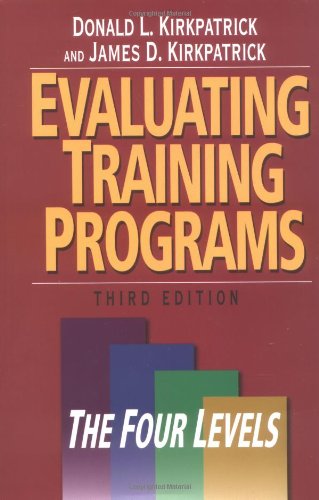Evaluating Training Programs: The Four Levels ebook
Par nelms edward le mardi, octobre 4 2016, 01:26 - Lien permanent
Evaluating Training Programs: The Four Levels. Donald L Kirkpatrick

Evaluating.Training.Programs.The.Four.Levels.pdf
ISBN: 1576753484, | 399 pages | 10 Mb

Evaluating Training Programs: The Four Levels Donald L Kirkpatrick
Publisher: Berrett-Koehler Publishers
Posted on May 26, 2013 by admin. But it also leaves several unanswered questions: What will The ACF also directed the grantee states to focus on seven key activities, including developing an early childhood needs assessment, establishing data systems and enhancing teacher training programs. A quick online search will yield hundreds of results about training evaluation and the various levels … some will even list Kirkpatrick's four levels differently. I feel that these four criteria are good places to evaluate the success of a training program, especially when the training programs are administered in a business/workplace environment. Kirkpatrick established a change in the trainee's performance. The four levels of training evaluation model was later redefined and updated in Kirkpatrick's 1998 book, called 'Evaluating Training Programs: The Four Levels'. Evaluating Training Programs: The Four Levels book download. My article was “Donald L Kirkpatrick's training evaluation model – the four levels of learning evaluation”, which talked about the evaluation theories of Donald L Kirkpatrick's, Professor Emeritus, University Of Wisconsin. Evaluating Training Programs: The Four Levels by Donald L Kirkpatrick. Don Kirkpatrick's Evaluating Training Programs: The Kirkpatrick Four Levels™ preview The Kirkpatrick Model he created over 50 years ago is the most recognized and applied method of training evaluation in the world. Paraprofessionals known as Program Representatives provide the day-to-day operations for programming at the local level. After that, for each program one has to set measurable learning objectives. Understanding Kirkpatrick's Four Level Training Evaluation Model. It shows that many states have embarked on needed projects, from data system development to better evaluation of the quality of preschool classrooms.